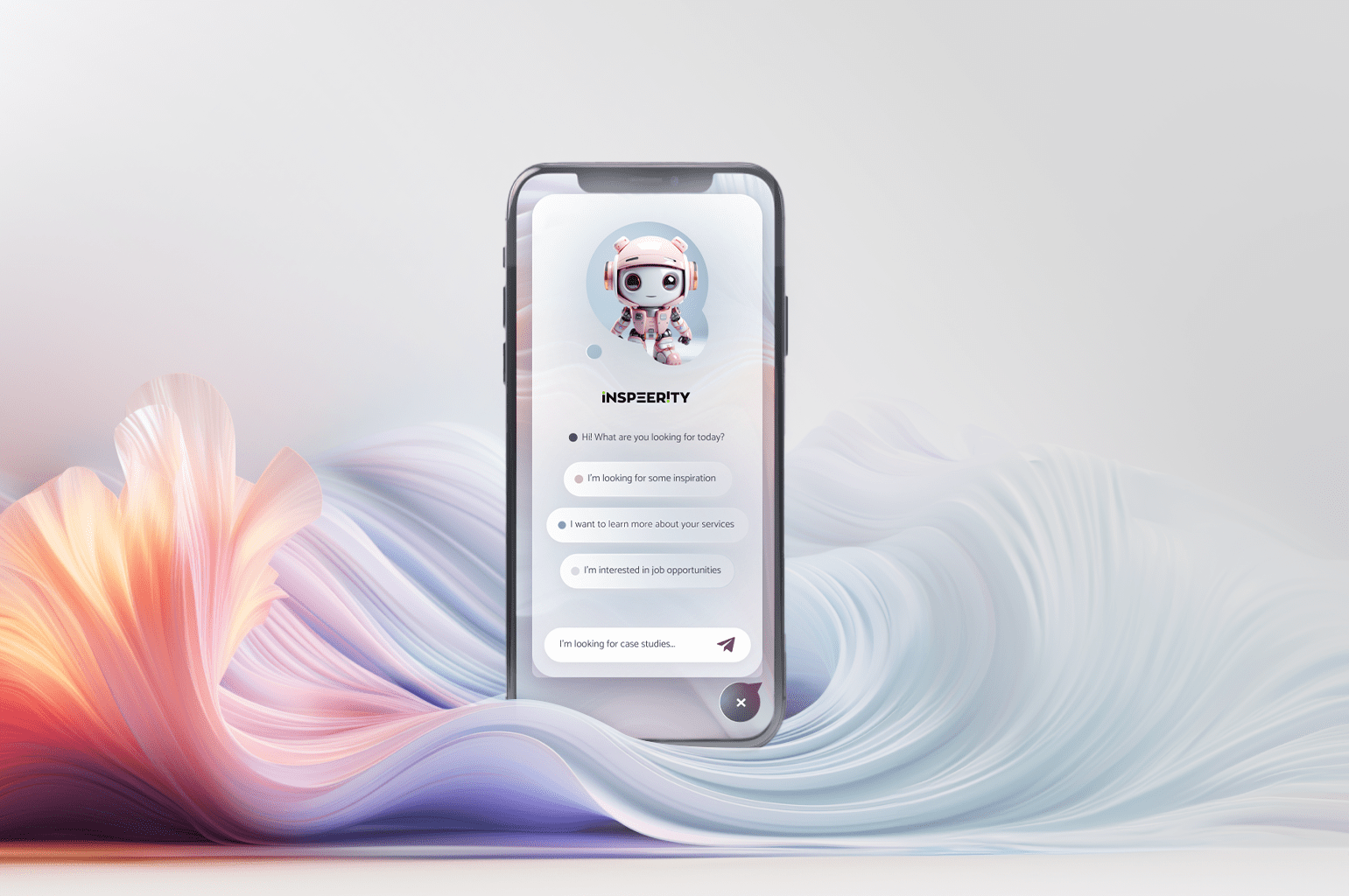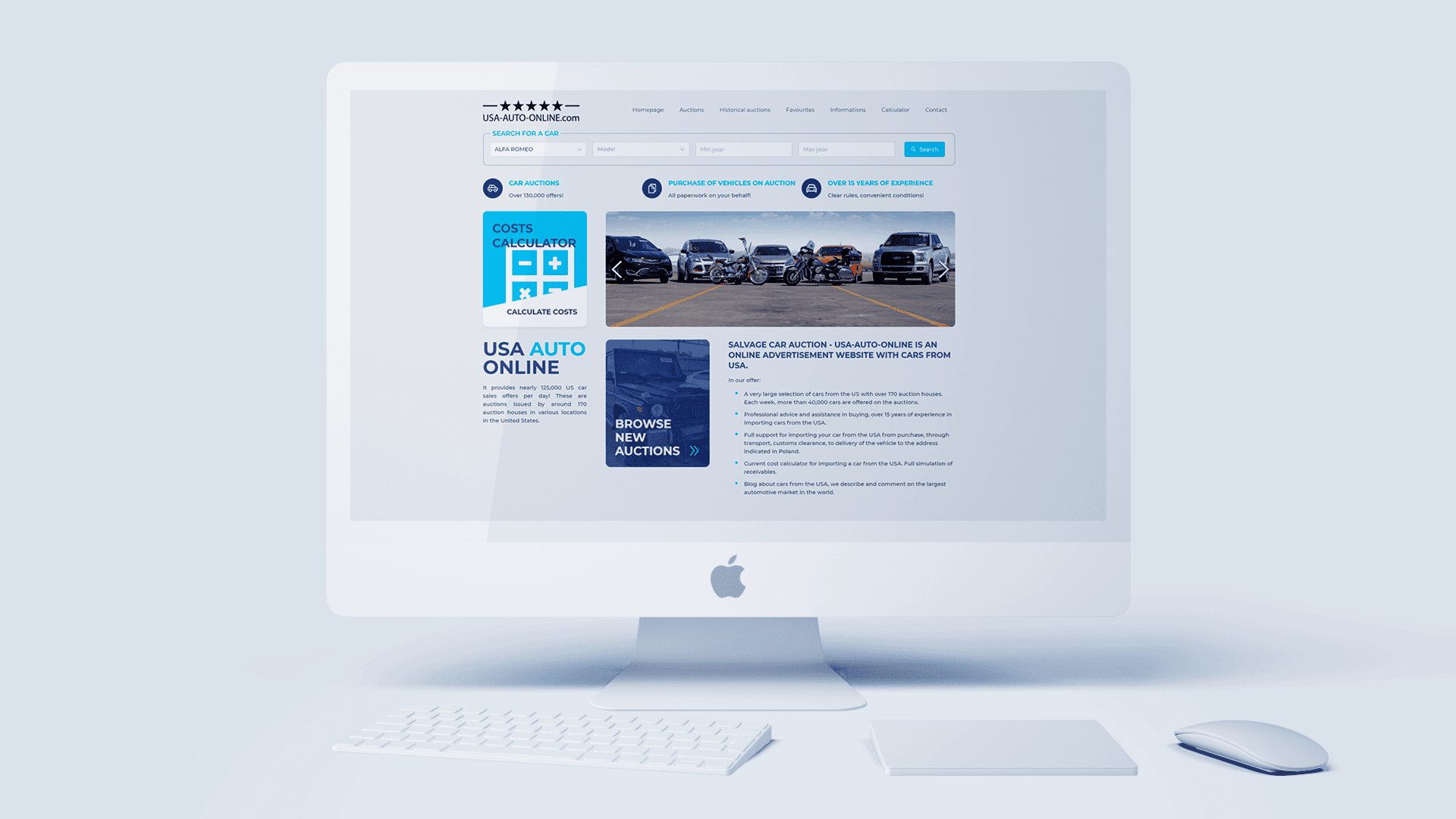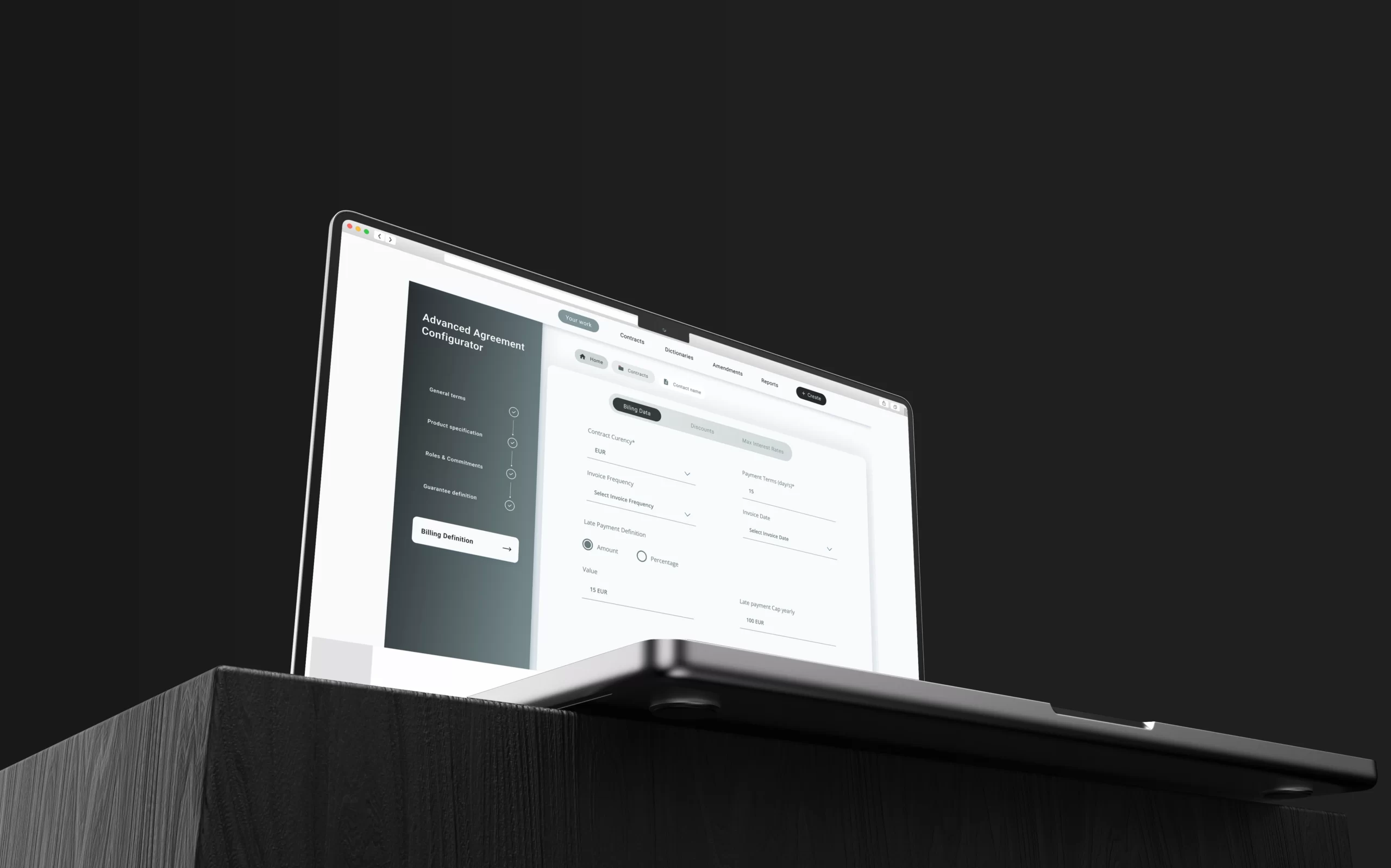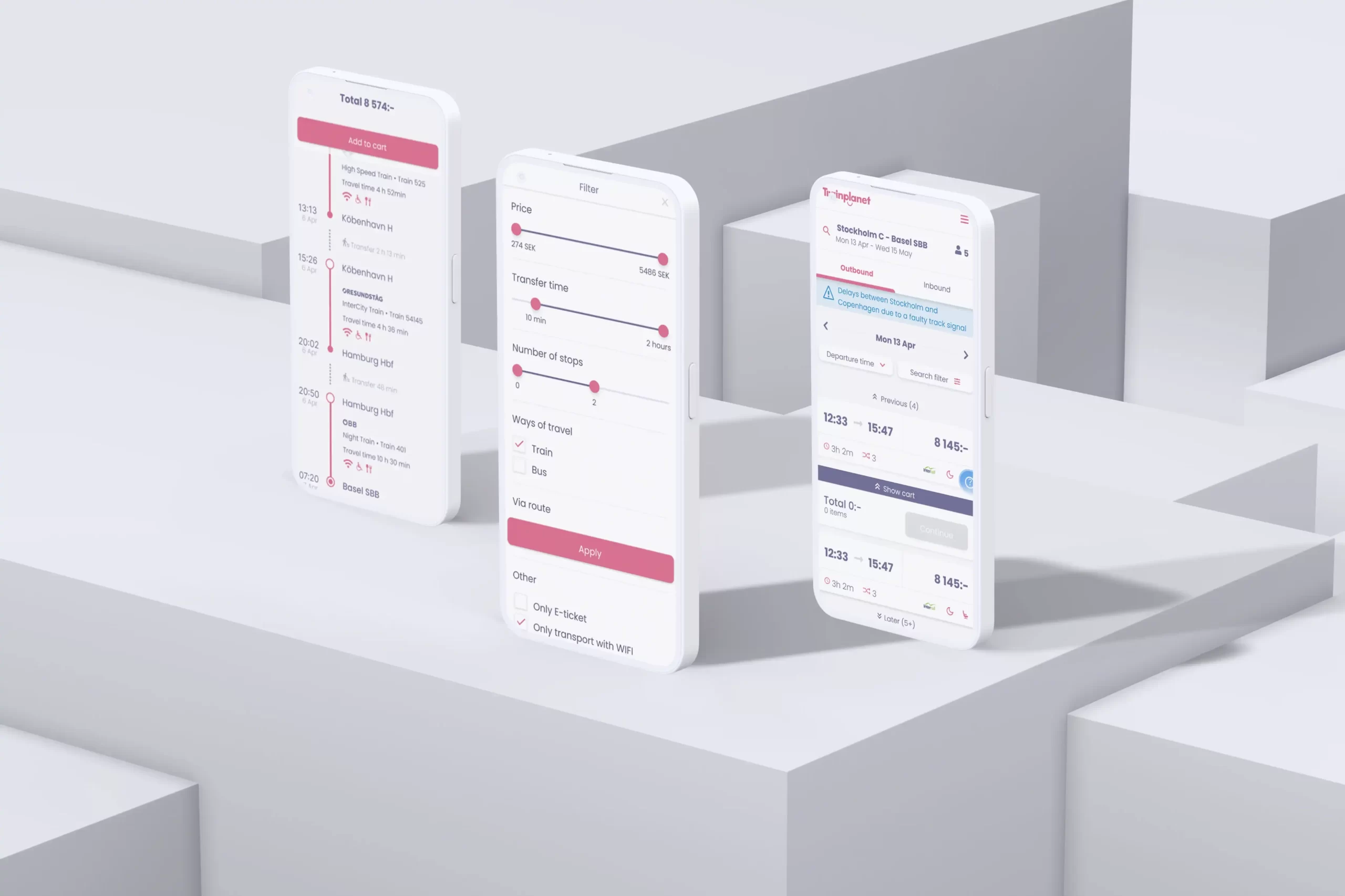Home / Case studies / ClearView
ClearView: Designing Architecture to Make Recruitment Bias-Free
The O‘Reilly Software Architecture Kata, created by Mark Richards and Neal Ford, is a global competition that challenges teams to design solutions for real-world problems. Discover our team’s award-winning architecture solution, ClearView.
Watch the video to discover the award winning project
Can we make hiring better for everyone?
That’s the question our team set out to answer. Dawid Bińczyk, Kacper Cybula, and Michał Fijałkowski had ten days to design an architectural solution for the non-profit Diversity Cyber Council.
Traditional hiring systems and Applicant Tracking Software (ATS) still struggle with bias. Studies show that around 40% of hiring algorithms discriminate.
Our goal was to improve traditional ATS systems by removing diversity data from initial screening stages. This means decisions are based solely on merit, as our solution removes bias in the hiring process.
01.
Requirements distillation
To ensure ClearView met its goals, a modified “six hats technique” was used. The goal was to explore the solution from the perspectives of the job candidate, DEI consultant, employer, solution owner, architect, and HR manager.
This method deep-dived into the user’s pain points and needs, allowing the team to evaluate both the user experience and overall system functionality.
And from this, both the Functional Requirements [GitHub] & Non-Functional Requirements [GitHub] were created.
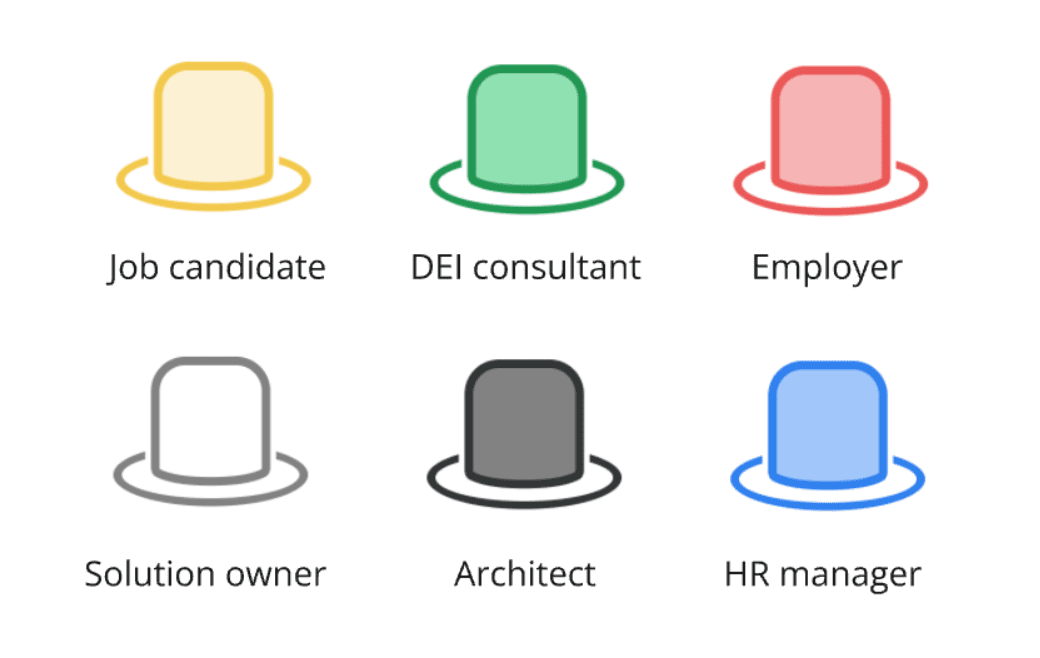
02.
Domain Exploration
Event Storming was used to identify ClearView’s key system events and contexts. This meant the team could explore & determine the context of the ClearView solution.
As a result, we were able to clearly define the key system components, which was important for further architectural analysis. You can discover the full results here.
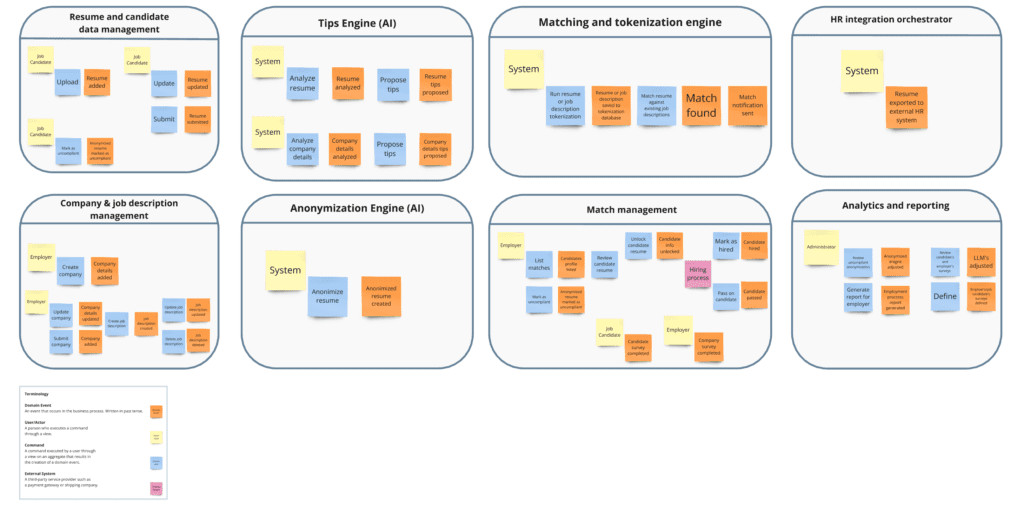
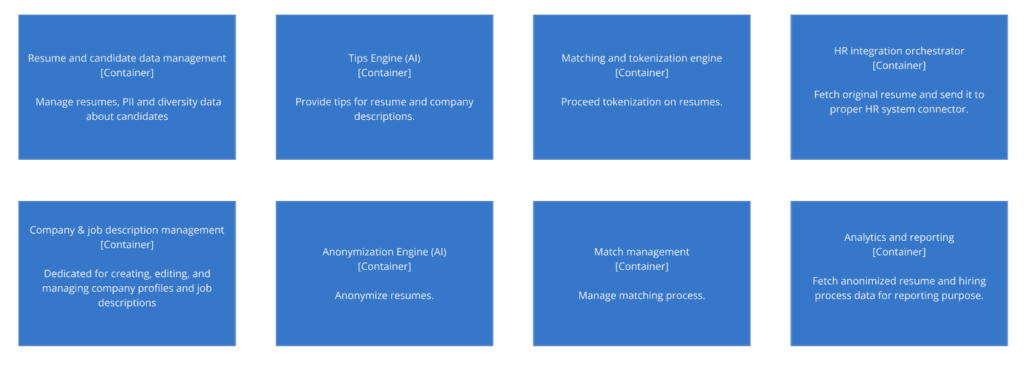
03.
Key Architectural Challenges
Thanks to the previous work with EventStorming and requirement analysis, we identified three main architectural challenges that would shape the system’s design. These challenges were important to define the architecture’s key characteristics:
- External AI services: balancing security and cost-efficiency.
- Integration with external HR systems: ensuring the solution could integrate with different systems
- Secure processing of personally identifiable information (PII): to support analysis and reporting while protecting sensitive data.
These challenges, combined with the client’s non-profit status and limited funding, meant the solution had to be cost-effective, functional, and future-proof. The evolving nature of AI technologies also influenced our decisions, ensuring the architecture could adapt to rapid changes in the market.
04.
Key Design Considerations
When approaching the project it became obvious that it would be operating under a few assumptions:
- Cost efficiency: given the client’s financial constraints, minimizing costs was a top priority so selecting cost as a primary characteristic was important. The system was designed to maximize impact without exceeding the budget.
- Integration and abstraction: integration and abstraction were prioritized to handle various HR systems. These characteristics allow flexibility and efficient management of multiple connectors and workflows.
- Evolvability: AI technologies change rapidly. With changing AI solutions the system needs to be adaptable while supporting integration and abstraction.
- Performance and Scalability: AI modules directly affect user experience, such as resume improvements and anonymization. This means they need strong performance and scalability.
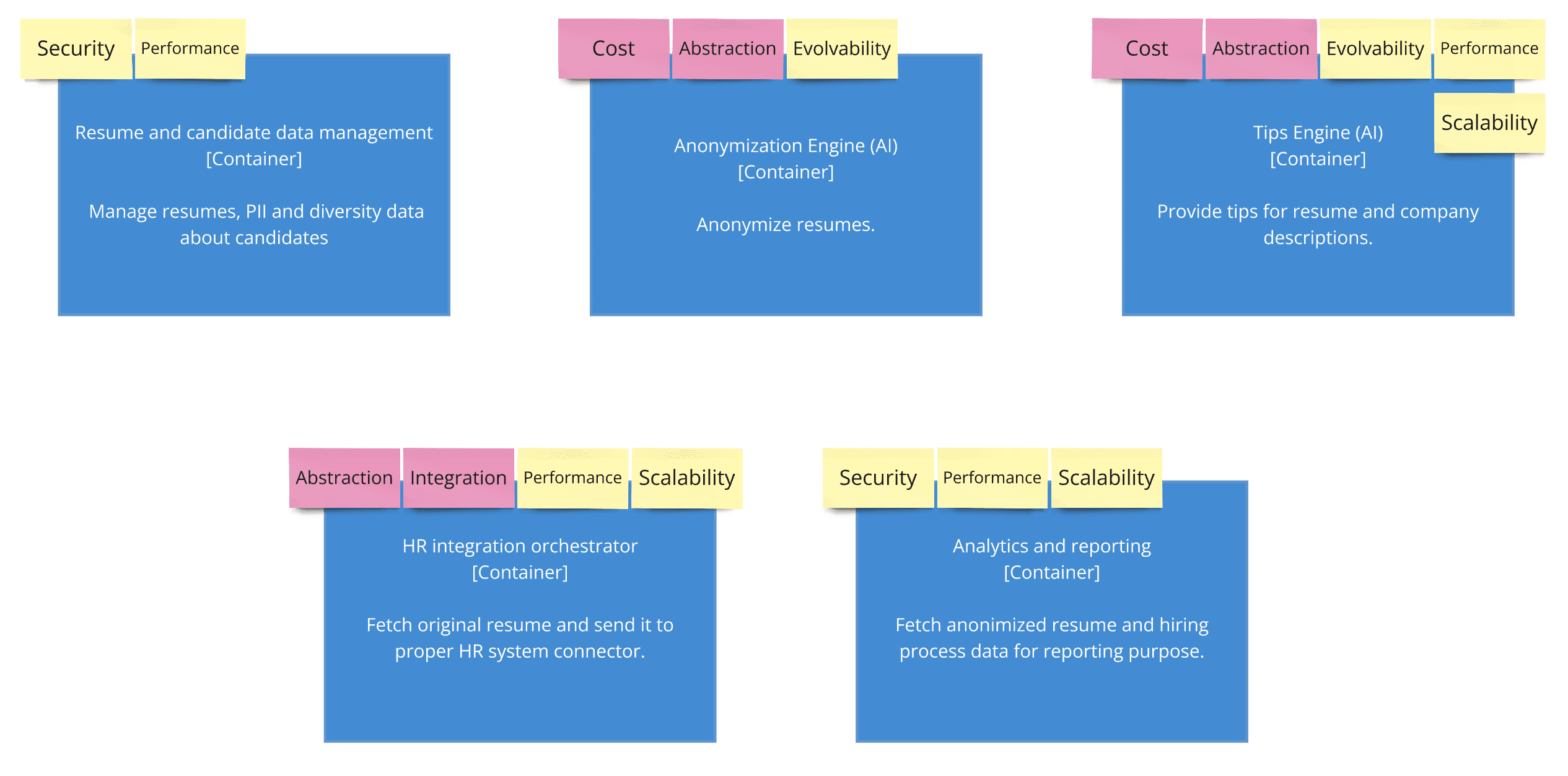
05.
Core system components & safety considerations
Based on these priorities, the architecture includes three core components:
- Tips AI engine: provides recommendations during company registration and improves candidate resumes.
- Anonymization AI engine: processes resumes to remove personally identifiable information (PII) and diversity data.
- HR integration orchestrator: manages connectors to push data into employers’ HR systems.
While not included in the top characteristics, because the system deals with personal information, Security needed to be a top priority.
- Resume and candidate management: handles sensitive PII and diversity data, ensuring protection against breaches.
- Analytics and reporting: processes large datasets to analyze hiring trends and diversity metrics, linking data to job postings and companies rather than individuals.
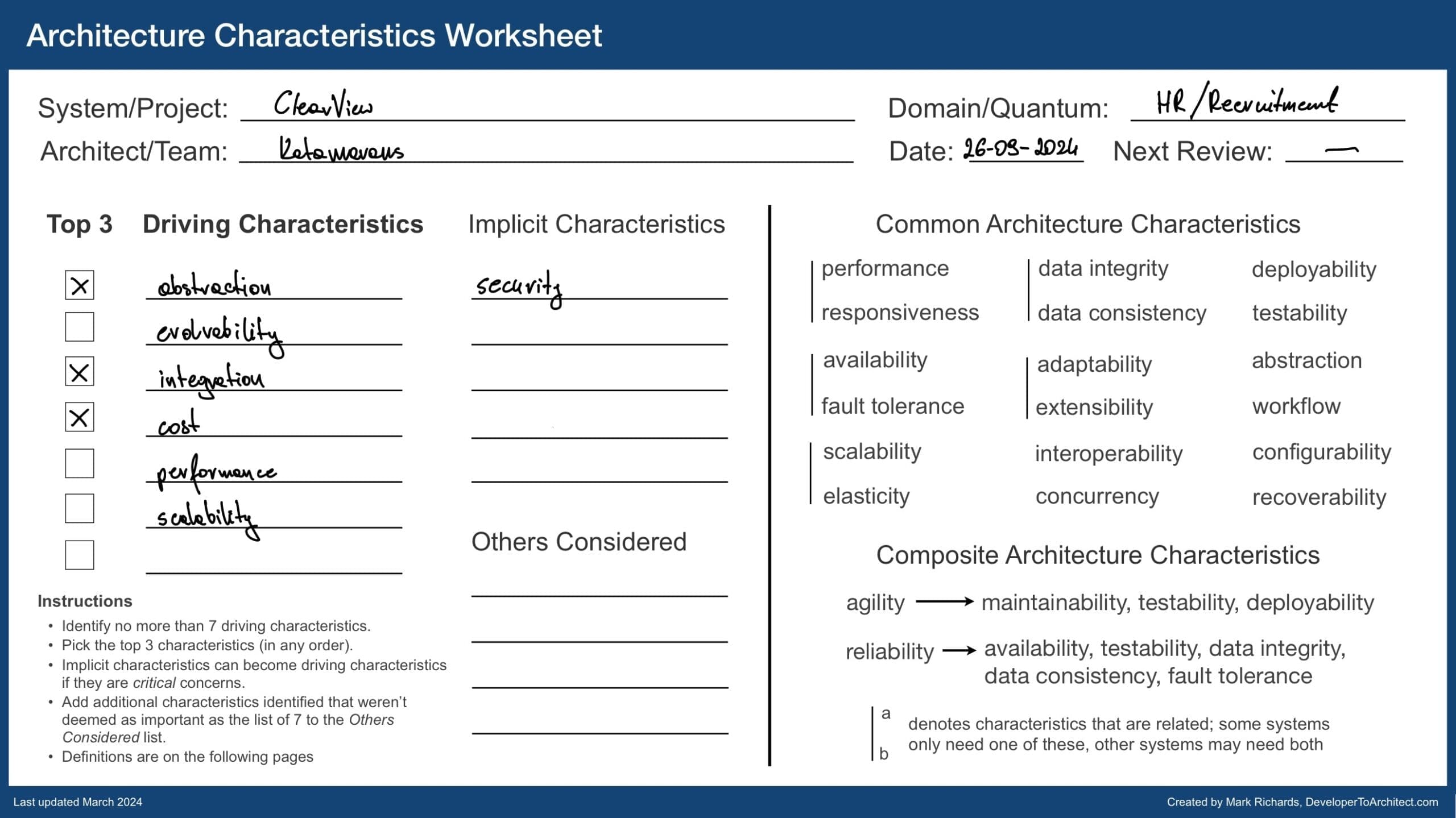
If you're passionate about software, don't miss these two episodes of our podcast (in Polish)
06.
Architecture style selection
We evaluated several architecture styles, ultimately selecting event-driven architecture for its:
- Low cost.
- High adaptability.
- Scalability and performance.
During the process, we considered three viable options; Microkernel, service-oriented, and event-driven architectures. Service-oriented architecture was rejected due to its high delivery costs and limited ability to evolve, while microkernel was ruled out because of its scalability challenges.
Event-driven architecture was the best choice because it could effectively match the solution’s needs.
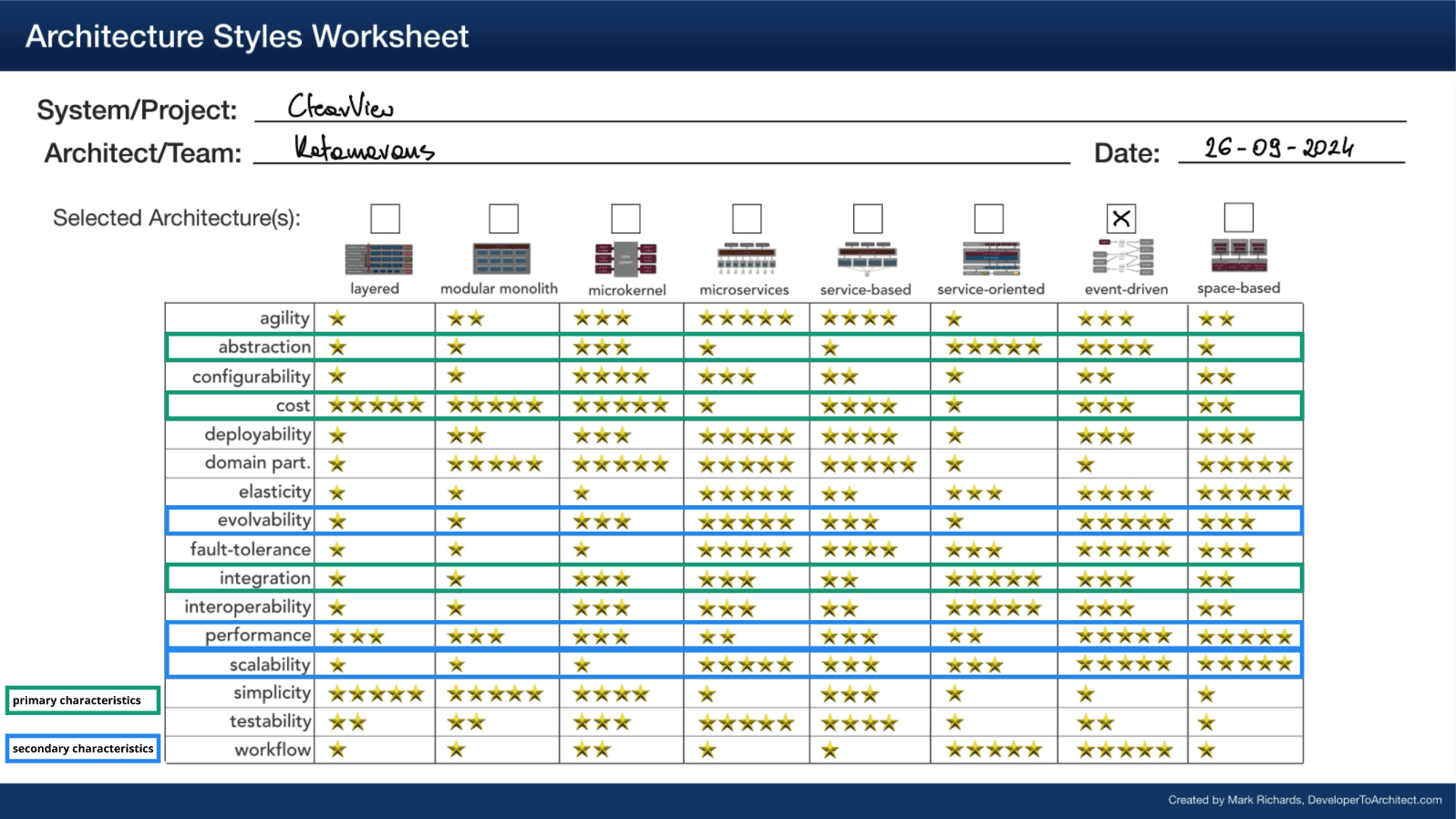
07.
Bird's eye system view & deployment example
The diagram below illustrates the system organization using the second level of the C4 model [GitHub]. While the architecture is event-driven, this doesn’t mean all communication relies on events.
For instance, HTTP connections are better suited for querying external AI systems due to their straightforward request-response nature. By leaving these decisions to the development team, the architecture remains adaptable, allowing the team to address challenges as they arise and tailor solutions to specific system needs.
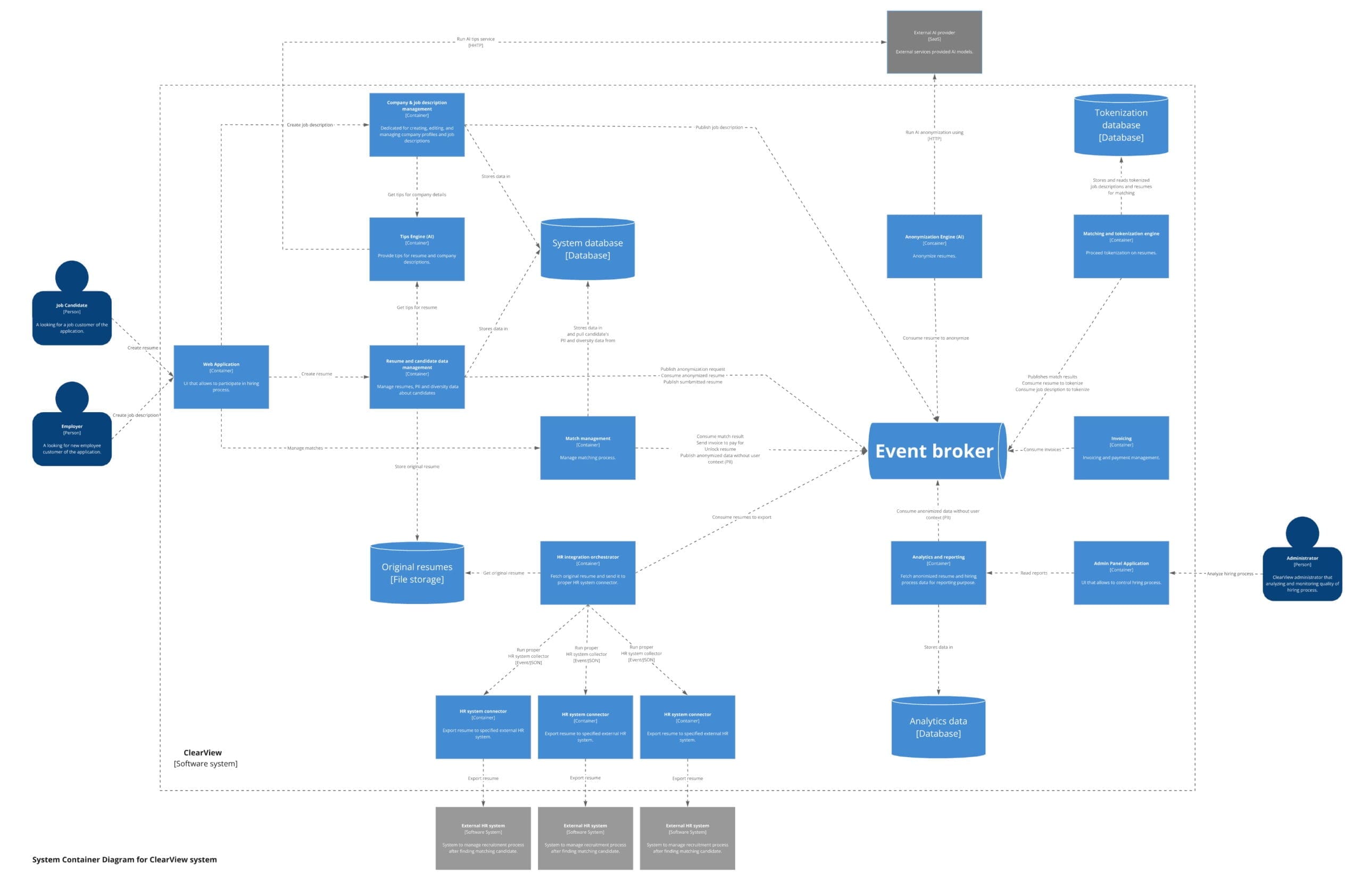
Deployment using Azure
To test the validity of the system, the team thought about how the solution would be deployed in practice. The outcome was a simple deployment diagram. You can find a more detailed description here.
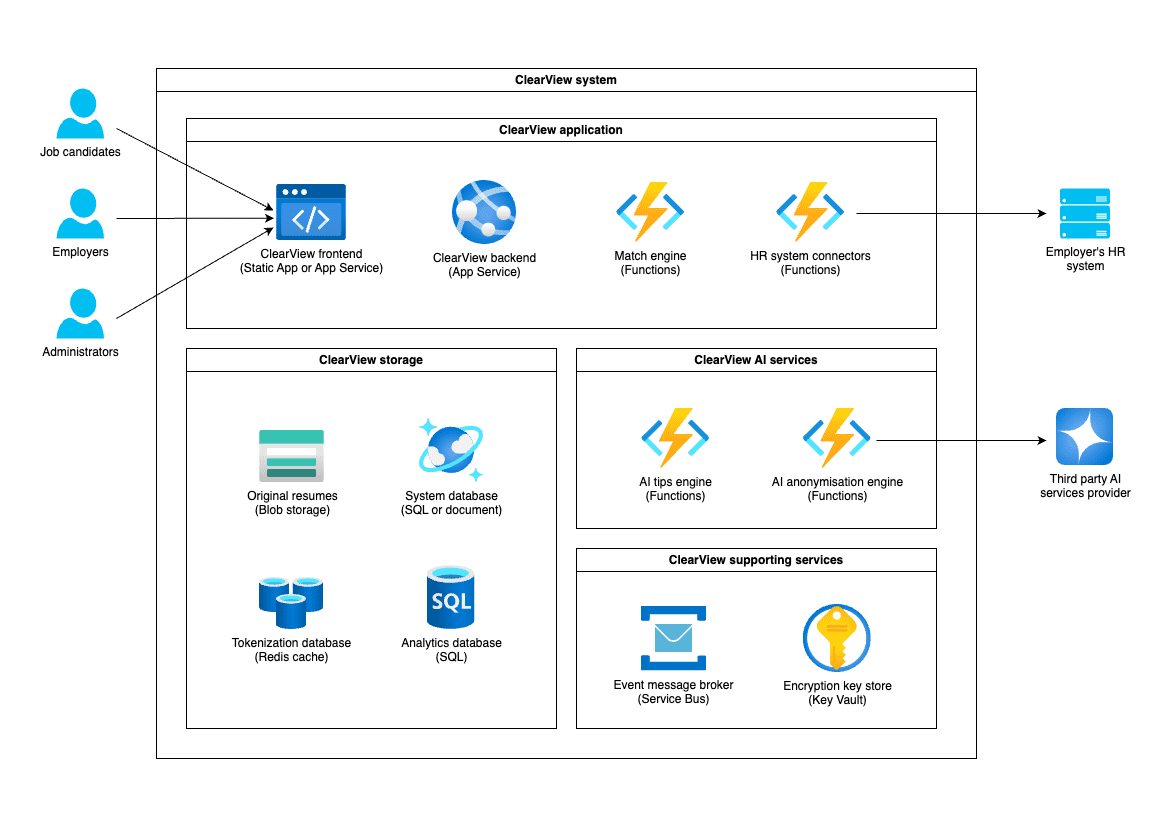
08.
Fitness Functions
To make sure the system meets performance, quality, and business objectives, fitness functions are used. These are measurable goals that are designed to verify if the system behaves as intended in real-world scenarios.

09.
Team Topologies
We applied Team Topologies principles to design a flexible team structure suited to the project’s goals, low budget, and startup nature. Instead of rigid specialization, we recommend assigning two team members to each of the two key focus areas
- AI and machine learning: focuses on improving AI modules.
- Integration team: develops and maintains HR system connectors.
Given the relatively low complexity of the core domains, splitting into smaller specialized teams or creating a dedicated platform would strain resources. This streamlined approach balances cognitive load, optimizes efficiency, and ensures the team can adapt effectively.
See how our team reacts to Kata results and grows their expertise to solve Your challenges!
Curious about our architectural solutions? Get in touch to schedule a meeting.
And in the meantime, watch our team’s reaction to the kata’s results 🙂
Thank you for exploring ClearView!
Read more
TREWOR: The AI Chat Assistant Simplifying Complex Documentation Across Industries
Say Hi to TREWOR, The AI Chat assistant for analyzing large documentation
Improved Cost Forecasting with a Custom Configurator for a 300-Strong Sales Team
See how we developed an Advanced Agreement Configurator for cost forecasting and contract management in manufacturing.
TREWOR: The AI Chat Assistant Simplifying Complex Documentation Across Industries
Say Hi to TREWOR, The AI Chat assistant for analyzing large documentation
Improved Cost Forecasting with a Custom Configurator for a 300-Strong Sales Team
See how we developed an Advanced Agreement Configurator for cost forecasting and contract management in manufacturing.
